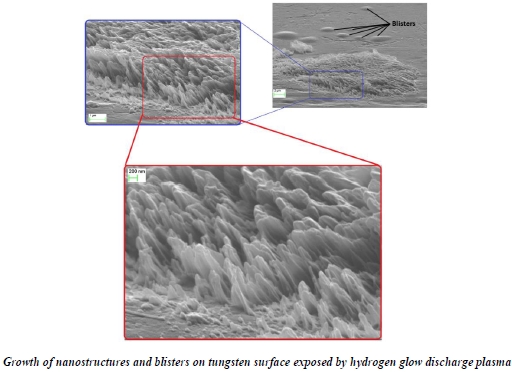Speaker
Description
Hydrogen glow discharge cleaning (H-GDC) is a routine conditioning procedure for the present tokamaks and the future fusion machines, including the ITER. Due to the low energy of hydrogen ions in glow discharge plasmas, the probability of any considerable damage to the plasma facing components was mainly ignored among researchers in the field. In this work, Tungsten and Molybdenum, as the primary candidates for the plasma-facing materials in tokamaks, are considered for studies regarding effects of the H-GDC procedure on these materials during a routine vacuum vessel conditioning in Damavand tokamak. After performing routine H-GDC using pure hydrogen, the formation of loosely attached nano-structure bundles (NSBs) on the surface of the tungsten and molybdenum samples were observed. The presence of the NSBs, which can be a source of dust, would be significant due to their possible effects on the functionality of the future fusion plasma devices. The NSBs are observed on the tungsten and molybdenum samples with the surface temperature of <370 K after 2.5-4 hours of hydrogen ion bombardment having incident energy of ≈ 100 eV and fluence of ≈ 2-3.5×10$^{22}$ m$^{-2}$. The surface modifications of specimens exposed to H-GDC were examined using a material probe experiment and several surface analysis techniques such as SEM, EDX, and ERDA. Therefore, the formation of loose nanostructures on the wall of plasma confinement vessels, due to H-GDC draws attention to probable damaging effects of this phenomenon upon functionality and outcomes of tokamaks.

